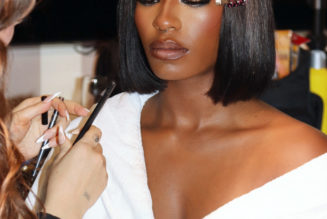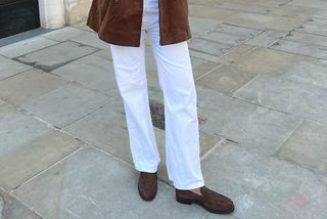
The rising cost of college has increased so drastically that higher education has been equated to a luxury brand. Like the representative properties of a Gucci label, an undergraduate degree from a top-ranking university can serve as a badge of status and perceived acumen—both of which lubricate the possibilities for professional opportunities and social mobility.
The logic is fairly straightforward: you surely must be “somebody” and have done something to afford such designer wears. Likewise, you must have come from good stock and be pretty clever to have graduated from “fill in the blank” university. Admittance to such an institution alone suggests a vetting process that affixes a good-housekeeping seal on the preverbal lapel of a student’s resume, which increases their candidacy for a good paying job.
Therefore, people are willing to spend upwards to $90,000 a year to attend such universities in hopes of benefiting from what these brands denote much like people are willing to spend a small fortune to own luxury branded products—despite how cost prohibitive they both may be for many of us.
But how well does this comparison hold up? Has higher education truly become a luxury? And if the comparison is indeed accurate, what can the state of luxury tell us about the potential future of higher ed?
What Is A Luxury Brand?
The literature refers to a brand as an identifiable signifier that conjures thoughts and feelings in the minds and hearts of people relative to a product, company, organization, or person.
Historically, brands were used to demarcate ownership of cattle whose differences were indistinguishable from each other. For instance, there was no way to tell one farmer’s cows from another so they would mark them with a branding iron to denote ownership. Savvy marketers would later imbue these marks with meaning could then be transferred over to its products.
Said plainly, brands are essentially vessels of meaning whose representation moves from the mark over to product.
(Original Caption) Utah Governor Signs Annual Frontier Round-Up Proclamation with Official Branding … [+]
Luxury brands are referred to as branded products that signify high quality, intrinsic value (be it functional or emotional in nature), and prestigious imagery of artisan craftmanship—all of which inspires deep consumer connections and commands a price premium. Those who consume these brands benefit from the transference of meaning from the products to themselves.
If I’m wearing a fancy suit and have a fancy car, then the perceived properties of these product goods are likely passed over to one’s perception of me. The reduced access to these products, thanks to the price tag’s higher barrier to entry, only heightens these cognitions associations.
With this construct as a foundation, the comparison between luxury and college begins to hold water. That is to say, a college degree signifies similar attributes to that of a luxury brand. Higher education is considered a prestigious institution that hires some of the brightest minds in the world to discover and distribute knowledge, while educating the future thought leaders of tomorrow.
College and universities are typically considered high quality products, which subsequently produce high quality students who go on to live productive lives and contribute to society. Therefore, the offerings of such institutions are perceived as valuable.
The comparison between a product good like a Gucci bag and a product service like a college education can often be misleading at the onset. One is tangible and the other is not, which makes one easier to evaluate—the tangible—than the other—the intangible. You can feel a product good and ascertain its perceived quality, but its much harder to evaluate your education without factoring in your participation in the consumption process—like whether you adequately put in the effort to prepare for class, went to class, or studied for exams. Product services are harder to evaluate.
PARIS, FRANCE – JULY 04: A passerby wears a Chanel golden bracelet, a Gucci leather bag with golden … [+]
This is why brands that produce product services go to painstaking lengths to tangibilize the intangible. Consequently, the buildings on college campuses are immaculately constructed and beautified to signal the institutions perceived intrinsic value.
Their campus décor is highly manicured and pristinely kept to provide an aesthetic that is representative of the value the product service provides, and worthy of the price tag it demands. This price tag, of course, creates a barrier to entry that prohibits many people from accessing these schools and leaves them vulnerable to predatory institutions that prey on the social promise of a college degree.
This is not unlike the physical appearance of the retail environment, the selection of the people who work in it, or the processes and rituals that are undertaken in a luxury store. Each touch point is curated to signal a desired meaning that is worthy of its cost and associated meaning transference. The calculus is that the benefit of this transference will provide ascendance in the stratified social hierarchy which would result in financial opportunities that would justify the price of the product.
The Financial Benefit Of Status
The sociologist Pierre Bourdieu likened this approximation to what he called cultural capital. The concept of cultural capital refers to the intangible resources that significantly impact one’s social mobility, which can lead to financial capital due to the networking opportunities these does open among people who presumptively share a similar position in society.
Access to cultural capital can help catapult a person from an underestimated rung of the social hierarchy and to a privileged position and drastically improve their quality of life. That’s the promise of higher education, after all—at least, that’s the way it had always been positioned to me a kid growing up in Detroit.
According to Bourdieu, there are three forms of cultural capital. The first form is embodied cultural capital, which consists of the skills we have obtained throughout our lives. If you speak many languages, play an instrument, or possess a rich understanding of classic literature, then you would be considered highly cultured and this would act as shortcut to signify where you are on the social hierarchy.
The second form is objectified cultural capital, which refers to the objects we possess that signal status. Luxury brands fits nicely into this form for all the reasons we’ve discuss thus far. The third and final form is institutionalized cultural capital, which refers to the places we work, the social groups we’re a part of, and the schools we’ve attended that signal social status.
Like a Gucci bag or growing up an equestrian, access to institutionalized cultural capital is a privilege—one that reinforces social class and marginalization. The rising cost of college not only mirrors the objectified cultural capital of luxury brands, but also creates opportunities for competitive disruption for other alternatives to signal status.
If the transactional promise of higher education is access to a better life, then trade schools, entrepreneurship, and YouTube-like-objects become increasingly compelling options. Media personalities like Gary Vaynerchuk have been extremely vocal about this point for years, and their refrain is not without merit.
According to the U.S. Chamber of Commerce, there is a massive shortage in trade jobs in the country. This shortage has led to a premium in salaries for skilled labor (because…economics) for plumbers, electricians, and HVAC technicians who can often make the same (if not more) than a recent college graduate—but without the bloated debt from school.
Social media influencers, on the other hand, provide yet another potentially lucrative career path that doesn’t require schooling or its debt. In fact, there are no “how to be a TikTok influencer” curriculums at these prestige institutions, even if you wanted to go the traditional route to a nontraditional trajectory.
The Implications Of A Luxury Brand
This is where the comparison between luxury brands and higher education gets interesting. The evidence of their similarities is strong, which emboldens us to explore the implications from one to the other and apply said learnings.
The demand for luxury is slowing as evidenced by softening sales from brands in the category, like Gucci. The brand, which has been a cultural mainstay for decades, reported as 20% decline in the first quarter of 2024. The decline in demand has primarily been attributed to out-of-reach pricing and alternative options—which are increasingly becoming more culturally valuable like the subversion of traditional luxury. “Quiet luxury” is an example of this phenomenon.
These headwinds are especially challenging for an industry with incremental innovations like the Gucci’s of the world, which parallels the contemporary realities of higher education. The costs are increasing, more alternatives are presenting themselves (and growing in social acceptance), but the innovation has been incremental. It took a global pandemic to thrust the ivory tower into a digital world with multiple modalities of instruction; and it does so kicking and screaming the whole way.
Amanda Slavin is an ed-tech founder and an advocate for innovation with regards to how we learn—from primary education and beyond. In her estimation, education is in need of new thinking with regard to pedagogy, the adoption of technology, and the ways in which we engage students. Amanda wrote a book about the latter topic called The Seventh Level where she outlines why engagement is so important and how its ideals can be implemented across a variety of contexts.
LAS VEGAS, NV – SEPTEMBER 27: CatalystCreativ CEO Amanda Slavin speaks onstage during day 3 of the … [+]
When I spoke with her for this article, she said, “Right now, the college degree is the only seal that we can trust with regard to what a person might know and what they can possibly do. However, innovations in technologies like blockchain authentications could challenge that status before we know it.” Considering the findings from a new study, led by the M.I.T. economist David Autor, this can be problematic for higher ed if it does not evolve.
Autor and his collaborators found that six in ten jobs people are doing today didn’t exist 80 years ago. Like influencers, many jobs today didn’t exist 15 years. If higher education isn’t preparing students for jobs of the future, this leaves opportunity for disruption to the category.
Amanda echoed this sentiment during our interview, “If jobs change what they value, then the perceived value of college will also change. Therefore, the trickle-down effect will erode the value of the college degree based on how we measure success for higher education.”
Her math is consistent with our analysis to this point. As she puts it, “Success equals ‘I got into this school, and I got this job.’ Going to school is not as valuable without the ‘I got a job’ part, based on how we measure success [of higher education].” This becomes increasingly more concerning when we consider the incremental rate of innovation in higher ed relative to the grow of new jobs.
The takeaway is clear: higher education is, in many ways, a luxury brand. Like luxury brands, not all colleges are equal but in general, the comparison holds up. And if luxury is any indication, higher education must innovate relative to the rate of change in society to maintain its dominate position, or it may find itself suffering similar challenges as the luxury category has in recent years.
We’ve already seen nearly 12,000 college campuses close their doors over of the last twenty years, so this isn’t a far-fetched notion.
As we consider the ramification of college as a luxury brand, we must paid heed to the importance of the social utility of higher education. The American Dream has long been intertwined with the promise of education. We cannot allow higher education to become a luxury reserved for the privileged few. We must reclaim the true value of a college degree—not merely a status symbol, but a powerful tool for empowerment, critical thinking, and better opportunities for all of us.









